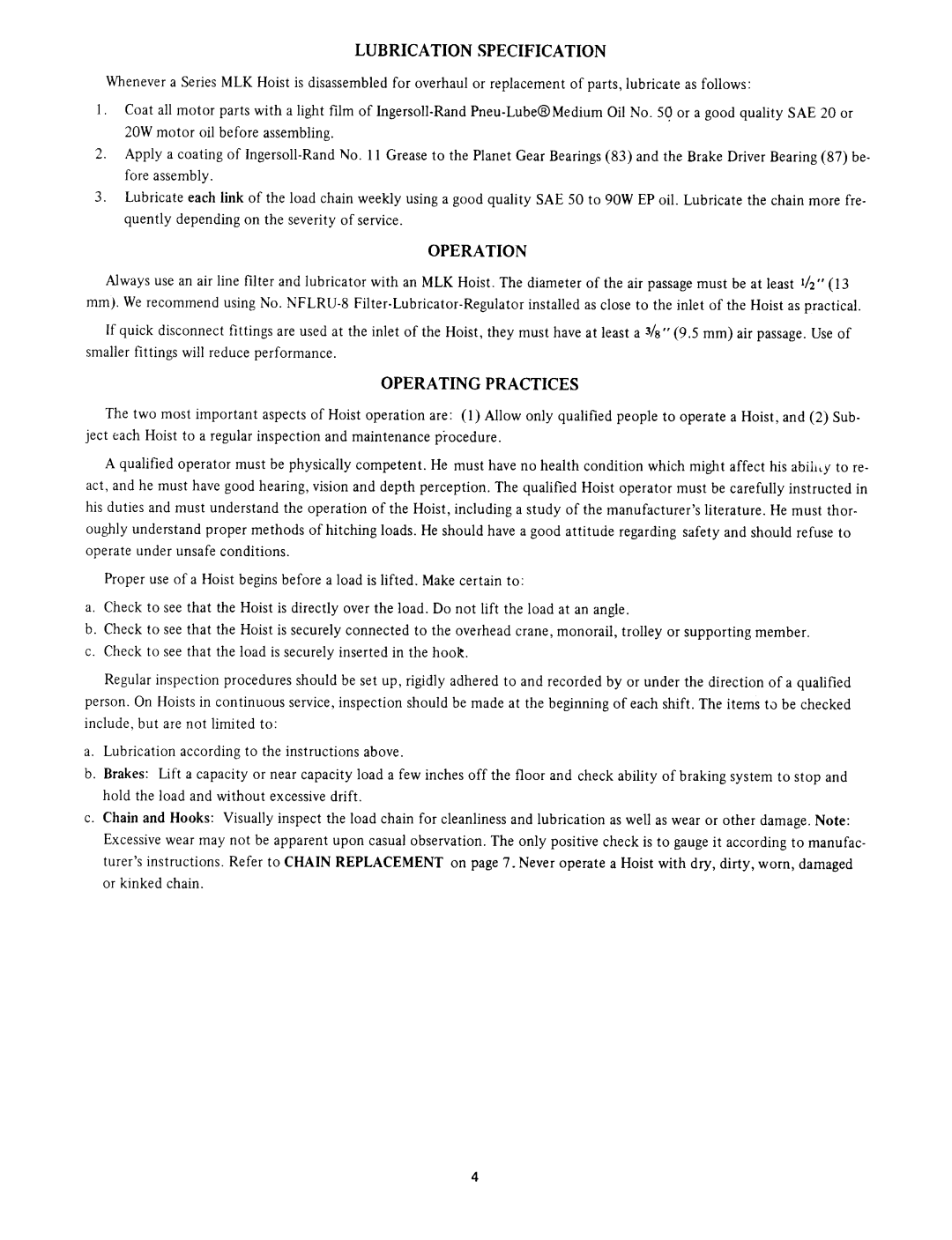ML50K, ML25K, ML100K specifications
Ingersoll-Rand has a long-standing reputation for excellence in the field of compressed air and power generation solutions. Among their diverse product lineup, the Ingersoll-Rand ML100K, ML25K, and ML50K models stand out as highly efficient and versatile options for various industrial applications.The ML100K, a powerhouse in its category, is engineered for heavy-duty performance. With a robust engine and advanced air management system, it delivers a maximum output of 100 kW, making it ideal for high-demand operations. Features such as integrated instrument panels and real-time monitoring systems allow for efficient management and operational efficiency. The compact design of the ML100K ensures ease of transport and installation, while its durable construction guarantees longevity in rigorous environments.
The ML25K model targets small to medium-sized operations, offering a balance of power and portability. Generating 25 kW, it is perfect for contractors and small businesses that require reliable compressed air solutions without the added bulk of larger models. Key technologies in the ML25K include an advanced sound attenuation system that reduces noise levels significantly, making it suitable for urban job sites. Its user-friendly interface provides operators with essential data and performance insights at a glance, enhancing usability and productivity.
The ML50K serves as a midpoint between the ML25K and ML100K, providing 50 kW of power that caters to a broader range of applications. This model emphasizes versatility, supporting various attachments and tools to meet specific operational needs. Built with an eco-friendly engine design, the ML50K not only reduces emissions but also optimizes fuel efficiency. The inclusion of smart technology features such as remote monitoring capabilities allows businesses to oversee their equipment’s performance remotely, cultivating proactive maintenance strategies.
Each of these models is built with quality and reliability in mind, ensuring that they can withstand the rigors of demanding job sites. The Ingersoll-Rand ML100K, ML25K, and ML50K represent a commitment to innovation with user-centered design, emphasizing performance, efficiency, and sustainability. These models are primed to meet the challenges of modern industrial requirements while providing operators with the reliability they need. Whether for construction, manufacturing, or service industry applications, Ingersoll-Rand's ML series provides outstanding value and performance in compressed air solutions.

